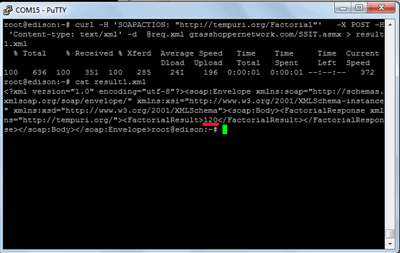
- #MUCOMMANDER COMMANDS.XML LINUX INSTALL#
- #MUCOMMANDER COMMANDS.XML LINUX UPGRADE#
- #MUCOMMANDER COMMANDS.XML LINUX SOFTWARE#
- #MUCOMMANDER COMMANDS.XML LINUX LICENSE#
- #MUCOMMANDER COMMANDS.XML LINUX DOWNLOAD#
Note that the change to the PATH variable put the new Java bin folders first so that they override any existing java/bins in the path. # export PATH=$JAVA_HOME/bin:$JRE_HOME/bin:$PATH Set the Java environment variables using the following commands: Setup JAVA_HOME Variable # export JAVA_HOME=/opt/jdk1.8.0_51 Most of Java-based applications use environment variables to work. Java HotSpot(TM) 64-Bit Server VM (build 25.51-b03, mixed mode) Java(TM) SE Runtime Environment (build 1.8.0_51-b16) # alternatives -set javac /opt/jdk1.8.0_51/bin/javacĬheck the installed version of Java using the following command. # alternatives -set jar /opt/jdk1.8.0_51/bin/jar # alternatives -install /usr/bin/javac javac /opt/jdk1.8.0_51/bin/javac 2 We also recommend to setup javac and jar commands path using alternatives: # alternatives -install /usr/bin/jar jar /opt/jdk1.8.0_51/bin/jar 2 # alternatives -install /usr/bin/java java /opt/jdk1.8.0_51/bin/java 2Īt this point Java 8 has been successfully installed on your system. The alternatives command is available in the chkconfig package.
#MUCOMMANDER COMMANDS.XML LINUX INSTALL#
Install Java with alternativesĪfter extracting the archive file, use the alternatives command to install it.
#MUCOMMANDER COMMANDS.XML LINUX DOWNLOAD#
Note: If the above wget command doesn’t not work for you, watch this example video to download the Java source archive using the terminal. # wget -no-cookies -no-check-certificate -header "Cookie: gpw_e24=http%3A%2F%2Foraclelicense=accept-securebackup-cookie" "" Download latest Java archive Download latest Java SE Development Kit 8 release from its official download page or use following commands to download from the shell.
#MUCOMMANDER COMMANDS.XML LINUX UPGRADE#
You need to upgrade your Java version to Java 8. Go to: /Applications/IntelliJ\ IDEA\ 15\ CE.app/Contents/istĪnd replace the JVM version with: JVMVersion Make sure the JDK home path is set to 1.8.Īnother approach which might help is by instructing IntelliJ IDEA which JDK version to start up with.

The reported number is the required number, not the number you are using. Thus, the 'major.minor version 52.0' error is possibly because the jar was compiled in JDK 1.8, but you are trying to run it using a JDK 1.7 environment. The error regarding the unsupported major.minor version is because during compile time you are using a higher JDK and a lower JDK during runtime. file.txt' to remove the file '-file.txt'.These are the assigned major numbers. Let say their is a file name -file.txt, to delete this file write command as: $ ls This extra dash is necessary so that rm does not misinterpret the file name as an option. Stallman,ĭelete file whose name starting with a hyphen symbol (-): To remove a file whose name begins with a dash (“-“), you can specify a double dash (“–“) separately before the file name. Written by Paul Rubin, David MacKenzie, Richard M. There is NO WARRANTY, to the extent permitted by law. This is free software: you are free to change and redistribute it.
#MUCOMMANDER COMMANDS.XML LINUX LICENSE#
License GPLv3+: GNU GPL version 3 or later.
#MUCOMMANDER COMMANDS.XML LINUX SOFTWARE#
–version: This option is used to display the version of rm which is currently running on your system.Ĭopyright (C) 2016 Free Software Foundation, Inc. Now, deletion from A directory(as parent directory) will be done as: $ rm *Įvery directory and file inside A directory is deleted.Ĥ. Normally, rm wouldn’t delete the directories but when used with this option, it will delete.īelow is the tree of directories and files: $ ls

At each stage it deletes everything it finds. r (Recursive Deletion): With -r(or -R) option rm command performs a tree-walk and will delete all the files and sub-directories recursively of the parent directory. Note: -f option of rm command will not work for write-protect directories.ģ. Rm: remove write-protected regular empty file 'e.txt'? n The -f option overrides this minor protection and removes the file forcefully. f (Force Deletion): rm prompts for confirmation removal if a file is write protected. i (Interactive Deletion): Like in cp, the -i option makes the command ask the user for confirmation before removing each file, you have to press y for confirm deletion, any other key leaves the file un-deleted.

Note: No output is produced by rm, since it typically only generates messages in the case of an error.ġ.

Let us consider 5 files having name a.txt, b.txt and so on till e.txt.


 0 kommentar(er)
0 kommentar(er)
